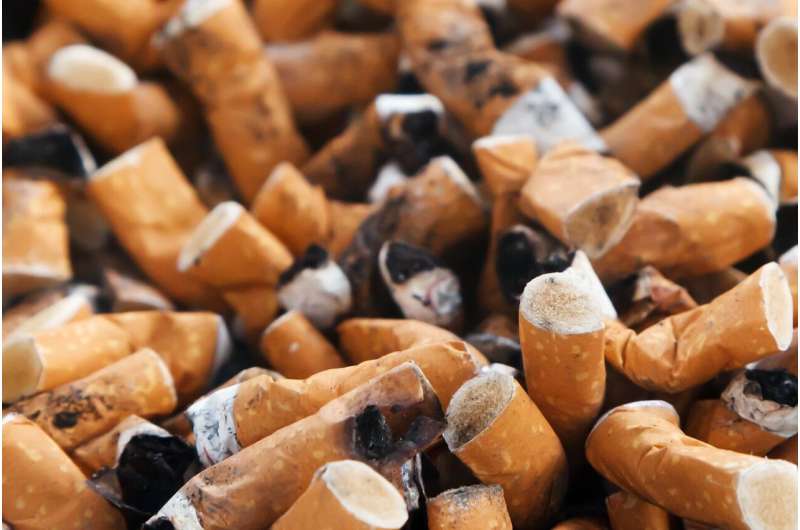Smoking. Credit: Pixabay
Policies aimed at cutting alcohol and tobacco consumption, including the introduction of random breath testing programs and bans on cigarette advertising, have resulted in a significant reduction in Australian cancer death rates, new research shows.
The La Trobe Centre for Alcohol Policy Research (CAPR) has led the first study into how public health policies on alcohol and tobacco implemented from the 1960s affected cancer deaths in Australia.
Researchers led by La Trobe epidemiologist Dr. Jason (Heng) Jiang, compared cancer mortality data available from the 1950s with historical alcohol and tobacco control policies and 100-years of consumption data.
Dr. Jiang said the results are a century in the making.
"Our research provides new evidence that key public health policies on alcohol and tobacco introduced in Australia from the 1960s to 2013 are related to reductions in mortality rates for various cancers," Dr. Jiang said.
"The changes in mortality rates are measured over 20-year periods and emphasise that the effects of alcohol and tobacco policies cannot be fully evaluated in the short-term.
"It's clear from our findings that the full effect of more recent policies, such as plain cigarette packaging and alcohol content labelling of beverages, may not be known for decades."
Published today in BMC Medicine , the researchers found:
- A series of key health policies on alcohol and tobacco have prevented more than 5 per cent (36,000) of total cancer deaths in Australia between the 1960s and 2013
- The introduction of random breath testing programs in Australia in 1976 was associated with a reduction in population drinking and cancer death rates for both men and women. The policy prevented 1 per cent of male deaths (4880) and 0.8 per cent of female deaths (1680) overall between the 1980s and 2013
- The release of UK and US public health reports in 1962 and 1964 on the health effects of tobacco was associated with a reduction in Australian tobacco consumption and cancer death rates—excluding liver cancer—with 3 per cent of male (13,400) and 4 per cent of female cancer deaths (11,600) in Australia in the last 30 years
- The ban on cigarette advertising on Australian TV and radio in 1976 was associated with a 1.9 (4,520) and 2.2 (2,430) per cent reduction in total male and female cancer death rates respectively, excluding liver cancer, between the 1980s and 2013
- Liquor license liberalisation introduced in the 1960s was linked to an increase of 0.6 per cent (2,680) of total male cancer deaths in the last 30 years
Dr. Jiang said the study should help inform future government campaigns or policies on alcohol and tobacco.
"It's important to evaluate what works, what doesn't, and where to invest future funding," Dr. Jiang said.
"We hope these findings will also help Australians make more informed decisions on their alcohol and tobacco consumption," Dr. Jiang said.
Background
The researchers used annual population-based time series data from 1911 to 2013 which reported per capita alcohol and tobacco consumption. They also accessed mortality data from the 1950s to 2013 for cancers of the head and neck (lip, oral cavity, pharynx, larynx and oesophagus), lung, breast, colorectum, anus and liver collected by the Australian Bureau of Statistics, Cancer Council Victoria, the WHO Cancer Mortality Database and the Australian Institute of Health and Welfare.
More information: BMC Medicine (2019). DOI: 10.1186/s12916-019-1453-z
Journal information: BMC Medicine
Provided by La Trobe University





















